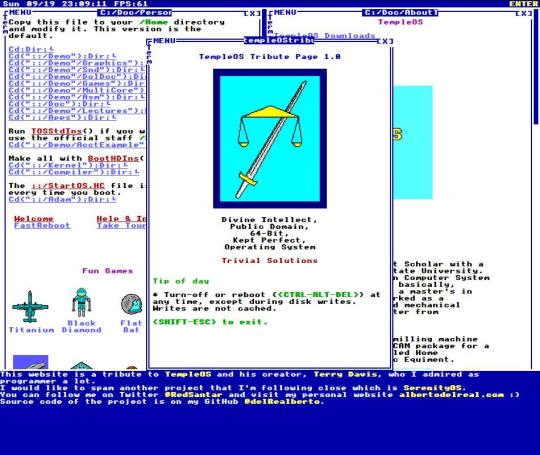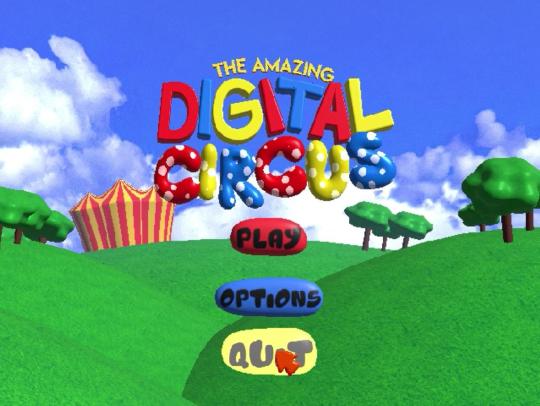#cost tracking software for construction
Explore tagged Tumblr posts
Text
How a Construction Cost Estimating Service Impacts Owner Decision-Making
In the world of construction, project owners play a pivotal role in guiding the vision and execution of a project. However, making decisions about design, budget, and resources can be overwhelming without clear, reliable data. This is where a construction cost estimating service becomes invaluable. By providing accurate and detailed cost projections, these services empower owners to make informed, confident decisions that influence the project’s success.
In this article, we’ll explore how a construction cost estimating service impacts owner decision-making and why it is such a critical part of the construction process.
Understanding the Owner’s Role in a Construction Project
Before diving into how cost estimating services assist in decision-making, it's important to understand the key responsibilities of a project owner. In construction, the owner is typically the person or organization funding the project and is responsible for:
Defining the project scope: Determining the project’s goals, requirements, and desired outcomes.
Managing the budget: Securing funding and ensuring the project stays within financial constraints.
Making high-level decisions: Approving designs, modifications, and progress, including deciding on materials, contractors, and timelines.
Risk management: Addressing potential risks and ensuring that the project is executed smoothly from start to finish.
Throughout the process, the owner must balance competing priorities, such as cost, quality, timeline, and scope. Having access to accurate, comprehensive cost estimates from a reliable estimating service helps the owner make better decisions and navigate these complexities.
The Impact of Accurate Cost Estimates on Decision-Making
A construction cost estimating service provides critical data that influences the owner's decision-making in several ways. Here’s a look at some of the key areas where cost estimates directly impact decisions:
1. Establishing a Realistic Budget
At the start of a project, one of the first tasks is to establish a budget. Accurate cost estimates are essential to defining the financial parameters of the project. A construction cost estimating service helps the owner establish a clear understanding of what the project will cost and what is financially feasible.
Accurate Financial Planning: The estimating service helps owners determine a realistic budget by providing an in-depth breakdown of costs. This includes everything from construction materials and labor to permits, equipment, and potential contingencies.
Avoiding Underestimation: Without accurate cost estimates, owners may underbudget, resulting in financial shortfalls. A thorough estimate helps prevent this by accounting for every potential expense, ensuring that the project can be funded without interruptions.
2. Prioritizing Design Features
Design decisions are often based on the owner’s vision for the project, but they must also be aligned with budgetary constraints. Cost estimates play a significant role in helping owners determine which design features are feasible within the available budget and which may need to be modified or eliminated.
Making Trade-Offs: For example, if the estimated costs for a proposed design feature exceed the budget, the owner may need to make trade-offs. With detailed cost information, the owner can decide whether to adjust the design, opt for more affordable materials, or explore alternatives to achieve a similar outcome at a lower cost.
Design vs. Cost Balance: Accurate cost estimates give the owner a clear picture of how their design choices will impact the overall project cost. This insight is invaluable when prioritizing must-have features versus nice-to-have additions.
3. Managing Project Risks
Risk management is a key component of any construction project. Accurate cost estimates help owners identify and manage financial risks, ensuring that unexpected expenses or project delays do not derail the project.
Identifying Potential Risks: A well-constructed estimate can highlight areas where costs may increase, such as material shortages, fluctuating labor rates, or environmental challenges. By recognizing these risks early, owners can plan for contingencies, set aside reserve funds, or adjust the project scope to mitigate these potential issues.
Financial Contingency Planning: With the help of the estimating service, owners can build a contingency into the budget. This contingency acts as a safety net for unforeseen costs, helping the owner avoid financial strain if things go off track.
4. Ensuring Contractor Selection Aligns with Budget
Once the project’s scope and budget are determined, the owner must select contractors who can meet both the quality and budgetary requirements. Construction cost estimating services can assist in this selection process by helping the owner evaluate contractor bids.
Evaluating Bids: When contractors submit their bids, the estimating service can compare these bids against the original estimate to ensure they are competitive and reasonable. If a contractor’s bid is significantly higher than the estimated cost, it could indicate that their approach is too expensive or that they’ve overlooked certain aspects of the project.
Identifying Cost-Saving Opportunities: Cost estimating services can also help the owner identify areas where contractors might save money without sacrificing quality. This can include recommendations for alternative materials, methods, or construction techniques that could help stay within budget.
5. Monitoring Project Progress and Cost Control
As the project progresses, the owner must continue to make decisions about additional spending, scope changes, and unforeseen challenges. A construction cost estimating service plays a key role in monitoring ongoing costs and ensuring the project stays on track financially.
Tracking Costs: The estimating service can provide regular updates on how the actual costs compare to the original estimate. If the project is veering off track, the owner can address issues early, whether by negotiating with contractors or revising the scope to bring costs back in line with the budget.
Change Orders: If there are changes in the project’s scope, the estimating service can help the owner understand the financial impact of those changes and decide whether to proceed or make adjustments to stay within budget.
6. Making Final Decisions and Project Closeout
As the project nears completion, the owner is responsible for making final decisions regarding the project’s scope and any last-minute additions or changes. Accurate cost estimates and ongoing cost tracking ensure that the owner can make these final decisions with a clear understanding of how any changes will affect the budget.
Final Adjustments: Whether it’s choosing to add an upgrade or dealing with unexpected issues that arise during the final phase of construction, the owner can make informed decisions with the help of the estimating service’s data.
Project Closeout and Financial Review: Upon completion, the cost estimating service can conduct a final cost reconciliation, ensuring that the actual project costs align with the original estimates. This financial review is essential for understanding whether the project came in under budget, met expectations, and provided value for the owner.
Conclusion
In construction, the owner’s decisions ultimately shape the project’s outcome. The role of a construction cost estimating service in this process cannot be overstated. By providing detailed and accurate cost projections, these services empower owners to make well-informed decisions at every stage of the project.
From establishing a realistic budget and prioritizing design features to managing risks and monitoring progress, a construction cost estimating service helps ensure that the project remains within financial constraints while meeting the desired goals. In short, accurate cost estimating enables project owners to navigate the complexities of construction, resulting in more successful projects that are completed on time, within budget, and with the desired level of quality.
#construction cost estimating service#owner decision-making in construction#construction budget management#design decisions and cost estimates#prioritizing design features#risk management in construction#managing construction costs#contractor selection and cost estimates#cost control in construction projects#evaluating contractor bids#change orders in construction#financial contingency in construction#managing project scope#construction financial planning#construction project risks#cost estimating for owners#project cost monitoring#project progress tracking#construction budget overruns#contractor cost evaluation#construction cost savings#managing scope changes#estimating construction materials#impact of cost estimation on owners#cost tracking software for construction#construction bidding process#construction project completion#estimating services for design-build#financial impact of design changes#construction cost reconciliation
0 notes
Text
Staff Management Software
Prestart’s Staff Management Software streamlines scheduling, enhances communication, and simplifies payroll processing. It offers real-time performance tracking, ensures compliance with labor laws, and empowers employees with self-service features, boosting overall productivity and satisfaction.
#prestartr#fleet management software#project cost tracking software#civil construction management software
3 notes
·
View notes
Text
Driving Efficiency: Fleet Management Software Solutions in Dubai
In the heart of the bustling metropolis of Dubai, where every minute counts and precision is paramount, efficient fleet management is crucial for businesses to stay ahead of the curve. From logistics companies navigating the city's intricate road network to construction firms overseeing a fleet of heavy machinery, the ability to monitor, track, and optimize fleet operations can make all the difference. This is where fleet management software solutions in Dubai come into play, offering innovative tools to streamline processes, enhance productivity, and drive business growth. Let's explore some of the top fleet management software solutions making waves in Dubai's dynamic business landscape.
1. Trinetra
Trinetra is a leading provider of fleet management software solutions, offering a comprehensive suite of tools to help businesses optimize their fleet operations. With features such as real-time tracking, route optimization, and driver behavior monitoring, Trinetra empowers businesses to improve efficiency, reduce costs, and enhance customer satisfaction. Whether it's managing a fleet of delivery vehicles or a construction fleet, Trinetra's customizable solutions cater to a wide range of industries and business needs.
2. Chekhra Business Solutions
Chekhra Business Solutions specializes in fleet management software tailored to the unique requirements of businesses in Dubai and the wider UAE. Their user-friendly platform offers advanced features such as GPS tracking, fuel management, and maintenance scheduling, allowing businesses to gain real-time insights into their fleet operations. With a focus on innovation and customer satisfaction, Chekhra Business Solutions is committed to helping businesses maximize their productivity and profitability.
3. Carmine
Carmine is a cloud-based fleet management software solution designed to meet the needs of businesses of all sizes in Dubai. With features such as vehicle tracking, driver management, and compliance monitoring, Carmine helps businesses streamline their operations and ensure regulatory compliance. Its intuitive interface and customizable reporting tools make it easy for businesses to track their fleet performance and make data-driven decisions to optimize efficiency and reduce costs.
4. Fleet Complete
Fleet Complete is a global leader in fleet management software solutions, with a strong presence in Dubai and the UAE. Their comprehensive platform offers a wide range of features, including GPS tracking, route optimization, and asset management, enabling businesses to maximize the efficiency of their fleet operations. With real-time visibility into vehicle location, status, and performance, Fleet Complete empowers businesses to improve productivity, reduce fuel consumption, and enhance customer service.
5. GPSit
GPSit is a trusted provider of fleet management software solutions, offering cutting-edge technology to businesses across Dubai and the UAE. Their platform provides real-time tracking, route optimization, and driver behavior monitoring, helping businesses optimize their fleet operations and improve overall efficiency. With a focus on reliability, scalability, and customer support, GPSit is committed to helping businesses achieve their fleet management goals and drive success in a competitive marketplace.
Conclusion
In the fast-paced business environment of Dubai, where efficiency and productivity are paramount, the adoption of fleet management software solutions is essential for businesses to stay competitive and thrive. Whether it's optimizing routes, improving fuel efficiency, or ensuring regulatory compliance, these software solutions offer a comprehensive suite of tools to help businesses streamline their operations and drive growth. By harnessing the power of technology and innovation, businesses in Dubai can unlock new opportunities for success and maintain their position as leaders in their respective industries.
#In the heart of the bustling metropolis of Dubai#where every minute counts and precision is paramount#efficient fleet management is crucial for businesses to stay ahead of the curve. From logistics companies navigating the city’s intricate r#the ability to monitor#track#and optimize fleet operations can make all the difference. This is where fleet management software solutions in Dubai come into play#offering innovative tools to streamline processes#enhance productivity#and drive business growth. Let’s explore some of the top fleet management software solutions making waves in Dubai’s dynamic business lands#1. Trinetra#Trinetra is a leading provider of fleet management software solutions#offering a comprehensive suite of tools to help businesses optimize their fleet operations. With features such as real-time tracking#route optimization#and driver behavior monitoring#Trinetra empowers businesses to improve efficiency#reduce costs#and enhance customer satisfaction. Whether it’s managing a fleet of delivery vehicles or a construction fleet#Trinetra’s customizable solutions cater to a wide range of industries and business needs.#2. Chekhra Business Solutions#Chekhra Business Solutions specializes in fleet management software tailored to the unique requirements of businesses in Dubai and the wide#fuel management#and maintenance scheduling#allowing businesses to gain real-time insights into their fleet operations. With a focus on innovation and customer satisfaction#Chekhra Business Solutions is committed to helping businesses maximize their productivity and profitability.#3. Carmine#Carmine is a cloud-based fleet management software solution designed to meet the needs of businesses of all sizes in Dubai. With features s#driver management#and compliance monitoring#Carmine helps businesses streamline their operations and ensure regulatory compliance. Its intuitive interface and customizable reporting t#4. Fleet Complete
0 notes
Note
So how much $ (in general) does it cost to produce a fully animated/rigged, fully voiced 1-3 minute cutscene in a game that’s in ongoing development (something like SWTOR, where they have a lot of prebuilt assets)? Like just a general low range and high range?
I’m seeing a lot of people complaining about prioritizing content they want, and don’t know enough about the behind the scenes costs to properly communicate they’re being unrealistic with their complaints.
The cost of any content in game dev is directly proportional to how much new stuff needs to be created for that content. In order to create a basic conversation cutscene to put into a game, we would need:

A narrative designer to write the script for the cutscene
A cinematic designer to script out the cinematic - which characters speak, in which order, with what timing, in which location, and what other actions they would take over the course of the cutscene
Animations for the characters to play in those positions
A rig for those characters to play those animations
Character models for the characters involved
Voice recordings for the characters to speak
A tool with which to set all of these parameters and organize the cutscene
A game system that can parse the tool data and assets and construct the cutscene from them
A script system to start playing the cutscene when the proper conditions are met
This doesn't include extra stuff like VFX, music, lighting, environments, props, etc. that might need to be created for certain specific cutscenes. In an ongoing game like SWTOR, element numbers 4, 5, 6, 7, 8, and 9 were already built long ago and already exist. As long as the designers can create the characters with the in-game character creator and reuse the existing rigs, no new resources need be expended to create them. If you need a completely new custom character model, that takes time from a character artist and a texture artist. If the character needs to animate differently than everyone else (i.e. needs its own rig), that's time from a rigger to create. If the cutscene needs new animations we need to bring on an animator to spend time building the new animations needed for the cutscene.

Using some napkin math, let's consider costs. We usually use the $10,000 per month figure to pay for a developer (salary, benefits, rent, utilities, software licenses, etc.) or approximately $2,500 per development week per person. Let's assume that each task takes a developer a week to complete.
Write the script (Narrative designer)
Script the cinematic (Cinematic Designer)
Record audio (Sound Designer + Voice Actor + studio time)
Rig one new character (Rigger) x however many new characters
Animate one animation (Animator) x however many new animations
Model one new character (Character Artist + Texture Artist) x however many new characters
Track all tasks and keep everyone on schedule (Production)
Test and validate that the cutscene works (QA)

At the very minimum, we need the script, the cinematic, production, and the QA tester, so a very bare bones cutscene that reuses all assets and has no new VO (say it only reuses the alien language) would cost 4x$2,500 = $10,000. If we add voice recording and keep it to one voice actor (let's say she voices both characters in the cutscene), then the cost jumps to 7x$2,500 = $17,500 because we need the sound designer, the voice actor, and the recording studio time. Adding in two new animations (e.g. one character throwing a punch and the second character reacting to getting punched) would add another two weeks of animator time, raising the cost to 9x$2,500 = $22,500. And so on and so forth. Those costs add up very quickly.

There are ways to get a "bulk" discount of course - we hire voice actors for blocks of four or eight hours, so we can record multiple cutscenes during that session and share some of those costs. We can create one new character and reuse her across multiple cutscenes so that we get more value out of her. Things get cheaper if we reuse stuff more, but they still cost a lot up front. The bulk discounts only really work if the things we're paying for can be reused multiple times though - the more specific an asset is (e.g. a kissing animation), the harder it is to reuse and the more expensive it tends to be relative to other assets.
[Join us on Discord] and/or [Support us on Patreon]
Got a burning question you want answered?
Short questions: Ask a Game Dev on Twitter
Long questions: Ask a Game Dev on Tumblr
Frequent Questions: The FAQ
102 notes
·
View notes
Text
AU Jervis Tetch
Me and @dariusblake have discussed how we'd write our own Batman / DC TV or comic series and each individual character that would appear in it. Tetch being among them. At his core, Tetch is someone deeply reluctant to stay in the real world and would first seek to create his own sanctuary (his Wonderland) like a Hikikomori before even considering developing a mind control device. Which would be later on, when he feels it's the only real way to feel in control of his life which - up to that point - slowly fell to pieces. He'd be one of the earliest antagonists sent to Arkham while it's still a respected institution genuinely there to help mentally ill and vulnerable people get back on their feet, before Arkham (under Strange's management) is effectively turned into a prison for super-criminals.
I'm also of the mind that Tetch would look very average, not a pretty boy or a decrepit leprechaun. Maybe on the shorter side and seeming shorter by the way he haunches both to make himself smaller and because he himself feels small with his cripplingly low self esteem after years of being put down and treated like he didn't belong. Creating Wonderland as a place where he does finally belong, though still feeling stuck behind the looking glass unable to reach through it for company. Isolated in his escapist safe haven.
Like in the animated series, Tetch would work in tech with a grant from the Wayne foundation, but not on a project to "enhance the brain's potential". Instead to make the neural / Brain-computer interface (BCI) of a more cost-effective mind-controlled prosthesis. Something which would go on to be used in Gotham's main hospital for patients with amputations and limb-paralysis. The focus being on stimulating motor function and sensory input. At home he'd try to translate that same BCI for simulating sensation and motion (like lucid dreaming, disconnecting is like awaking in the midst of REM sleep) in a virtual landscape (basically an especially immersive VR software akin to Sword Art Online's nerve gear) dubbed "WonderOS" and his pet project running on it called "Wonderland".


Less a direct recreation of Wonderland from Lewis Carol's novels and more his personal sandbox to tweak and enjoy in his own time. Although its only user, Tetch put meticulous detail into his avatar that no one would likely see. Standing tall and proud with a top hat and bow tie. His smile charming, rather than unnerving. He'd always manage to overdress no matter the occasion in real life, so it felt fitting to extend that habit here too. With so little going on in his life outside of his job, what started as a fun side-project soon encompassed all of his free time. Progressively losing his interoception the more he becomes engrossed in his pet-project. Easily losing track of time to the point of forgetting to sleep, eat or drink, or would fall asleep in the sandbox and be disorientated whenever he'd wake still wearing the headset.
Still, he'd always disconnect eventually. Each time hit like a worse hangover than the last. His shortening time spent in the real world only existing to fuel himself for a longer expedition into his expanding digital world. That is until he'd exhausted all its mechanics and NPC interactions. By now, adding more felt hollow. He'd know exactly what they'd say anyway so why bother? The comforting predictability of the oasis he'd constructed started showing its cracks, or rather it could no longer obscure what cracks had been there all this time. The loneliness... the isolation. When was the last time he spoke to a real person, even at work?
Frankly it was always hard to know what to talk about. He'd tried pitching Wonder OS at work before, garnering minimal interest at best. Like most of his ideas. It always seemed like any attempt to make conversation ended abruptly with no explanation. Who would want to spend time with him in the virtual world if people never wanted to do so in the real one? No, if he wanted to add more player characters he'd have to reach out a different way.
For all his difficulties making friends in the real world, Tetch accrued a fair few online. He'd originally used the forums to post tech support tips, gush about his favourite books, and provide updates about Wonder OS' development to mixed reception. Some genuine interest arose, so when the time came to test Wonderland's "multiplayer mode" there were already a handful of people eager to test it within an hour of the announcement's upload. He'd had about ten additional headsets he'd built for multiplayer mode ready to post and was willing to make more but for now he happily sent out the initial batch. Specially made to not include the admin privilege of being able to log off. He would get to dictate if or when they leave and, well, he cannot guarantee they'll be back so it's best not to give them the option.


Tetch's performance at work may have been deteriorating before, but now his complete absence was noticed enough to garner a pink slip. One which never arrived. While Tetch's absence may have been more an annoyance to his colleagues that hadn't yet realised how much they leaned on him to get things done until now, the people he'd roped into being his captive audience were missed far sooner. Although they were found soon after their missing person cases were opened (being stuck at home), it only raised more questions. When someone tried yanking off one of their headsets, they were in a catatonic state - still partially in Wonderland.
The escalation from a missing persons case to some sort of hostage situation lead to the cases being grouped together and them entering Batman's radar. A common link was a. the headsets and b. the return address - which directly led back to Tetch. Most of the users hadn't recycled the packaging of their hardware before putting it on, making it easy to find. It's a good thing too, since no one (not even Tetch, who is the only one actually able to leave) has left Wonderland for a full week by the time Batman's on his trail. Too much longer and they'd keel over from neglecting to eat or drink.
Expecting a fight and some nefarious hostage scheme (as with the mob bosses he's faced thus far), Batman is shocked to find not a mastermind controlling a flurry of monitors, but someone rigged to their headset just like the other hostages. His apartment was in a shoddy state. Cables strewn about the floor haphazardly like mangrove roots in a swamp, the air stale and warm from days worth of heat emanating from the hardware that dominated the room he was found in. Curtains shut and dusty, untouched for what must have been months. Among the cables were tubes, an IV drip? Did Tetch plan ahead to make sure he could survive indefinitely rigged up to whatever he'd made?
After inspecting the computer the headset was connected to, Batman forcefully overrides Tetch's admin privileges and logs the hostages off. That alone seemed to stir something, like Tetch was in the midst of a night terror, which grew into a full-blown, panicked breakdown when Batman pulled his headset off. Shaking like a leaf, hands clasping his head as he sank from his chair to the floor. Honestly Batman doesn't really know what to do. Up until now he'd cracked down on Gotham's crime families who all put up a fierce fight, but this... is different. Still, it seems best to bring him in, if only to get him out of this dingy apartment and figure out where to go from there.
The GCPD aren't sure how to prosecute him. Would what he did be legally considered kidnapping? Or any other crime? He's kept in a holding cell while they fumble for a specific crime to charge him with. With nothing landing, he's instead sent to be a long-stay patient at Arkham (which at this point is a genuine respected psychiatric hospital for regular civilian patients) for both evaluation and therapy. They confiscated the hardware he'd used to run Wonder OS and sent it in for analysis, though couldn't make heads nor tails of a lot of his work.

Honestly being "sentenced" to free therapy really wasn't much of a punishment at all! Still took some time to adjust to the cold white brick walls, overly sanitised surroundings and the inescapable brightness both natural and not that did his head no favours. Haven't they heard of curtains? Until therapy he hadn't realised how infrequently he spoke out loud, stammering with nerves and the unfamiliarity of it. Like his mouth had forgotten what to do. Despite it all he was grateful for the company each session brought, even if it was for a prescribed purpose. Each chat feeling more sincere than any he'd had in years, to the point that his heart sank a little as each session came to a close. He hadn't really drank tea before coming here. Coffee, especially on days he'd forgotten to really sleep working all night on Wonder OS, was his go to, but a switch might be in order. Been a while since he last felt this calm. Calm enough that even his stammer was beginning to fade with the help of some speech therapy alongside his normal sessions.
The tea and kind words warming him to the idea that maybe the world isn't so scary and that he might even have a place in it. After a year or so of progress, the staff agreed to release him on probation. Pretty difficult to build a social support network while cooped up in an asylum, so they thought it best to give Tetch the opportunity to go out and meet new people. With no real support network to go back to, he'd really be starting from scratch like a tourist. Not the safest idea in Gotham, so they pointed him towards a few clubs and support groups first as a good starting point.
Of course, he went with the book club. Barely saying a word for the first few meetings, what confidence he was emboldened with upon release was slightly dampened by the reality of actually having to put himself out there. Truth be told, a few of the club's members recognised Tetch from his "Wonderland" incident a year ago and those that did make a concerted effort not to sit next to him, not that he was especially keen to initiate conversation either. That was until the week's topic turned to Alice in Wonderland, at the suggestion of one such clued-in member. As they'd suspected, Tetch perked right up, brimming with energy to discuss it!
The sudden shift in gears was pretty jarring, but one that people warmed up to. Though he'd still mainly talk about the story and occasionally let slip about aspects of his passion project (not realising it made more people clock where they'd heard of him from), it opened the door for more general conversation. His excited friendliness still on the jittery side, one of the members felt a little bad about how clearly anxious he was and offered to help him feel more welcome.
Giving advice on what helped him, including teaching Tetch how to microdose, which they preferred to take by brewing magic mushrooms into tea. And it helped! Becoming part of Tetch's morning routine, it's the closest he's felt to being himself back in Wonderland since well... you know. Tetch responded well to therapy, making remarkable progress even without medication, so his therapists though it best not to prescribe anything since it wasn't strictly necessary. The difference self-medicating made had Tetch second-guessing their judgement though.
After a few months of settling in, for once Tetch is invited to a social gathering outside of the book club to their annual Christmas do. In his youth as an apprentice lab tech at Wayne Enterprises he hadn't really gone out before. Most alcohol tasted vile to him unless it was disguised by more pleasant things like in a cocktail, not to mention how hard it hit him after barely a few sips felt as unpleasant as it tasted. Even so, he felt in no position to be picky about where they went that night given how flattered his was that they thought to invite him at all!
Most of the bars were fine, but a bit too loud and crowded for his liking. He may be able to cope with people better now he's started having his morning "tea", but it was still a bit overwhelming. That was until they reached one of Gotham's Goth bars. How rare it was for him to finally not feel overdressed! Amidst the buckles and leather waistcoats, lace and striking makeup he, weirdly, fit right in despite his attire being far more colourful than the bar's usual clientele. By the night's end he'd gravitated away from the group he'd come with, making his own fun with new people for the first time in forever. People he'd come to know as friends as he truly started re-building his life better than it was before!


Since his old workplace fired him before Batman linked him with the missing persons and found him, and Arkham's vouching for him didn't get Tetch his job back (especially since they weren't too happy tetch had adapted their BCI for recreational use), Tetch was out of work. That was until Grant Walker reached out, wanting to adapt Tetch's Wonderland to create a virtual theme park and to improve the IRL parks' AR and immersive elements (think the Xbox connect Disneyland game, but actually functional). An opportunity Tetch couldn't pass up, given he'd been struggling to find work since leaving Arkham and was entering an increasingly precarious financial situation.
Since Tetch adapted Wayne Enterprise's BCI they'd help develop into the hardware running Wonder OS, there was some dispute about whether or not his project would be entirely his own IP or if the resources he technically stole to make it could get him in legal trouble. "Fortunately" Walker offered to protect Tetch from any such case, in exchange for Tetch granting Walker the right to use, market and profit from the virtual he'd created Wonderland - which he agreed to. As successful as Walker's ventures so often were, the opportunity to experiment with park ideas without the expense of land or labour seemed too tantilising to pass-up. Not to mention it could be another venue of advertising his existing IPs to people who otherwise couldn't afford to go to the parks themselves.
Initially, the public reception to announcing Wonderland's debut was... mixed. Reviews from playtesters were glowing, and Walker had his team refine the multiplayer headsets Tetch had prototyped into something that could be made and distributed much more cheaply. Still, trust in Tetch's handiwork was minimal at best after what he did, how could they trust he wouldn't just use it to trap more people again? A green tick of approval from an asylum wouldn't be enough to convince people Tetch was sane. Eventually though, a mix of relentless promotion and sanitisation of Tetch's past got Walker the results he wanted and a steady player base grew.
Honestly, Tetch had tried deliberately to avoid going back into Wonderland or doing any work on his old pet project while he was still getting back on his feet. Especially because until he had a reason to return to the real world, he probably never would have. Oh the temptation, especially early on, was gnawing at him as the dread and self-doubt lingered despite all the progress he'd made in therapy. Returning to it now seems... strange. Like staring at an old picture of himself, so detached from how he felt at the time he'd made it. But he needed the money, and was a different person now, right?
By his therapists' orders, Tetch limits his screen-time only to a few hours a day and goes on a walk / runs errands outside for at least an hour every day, to better facilitate chances of meeting new people and to prevent another spiral into self-isolation. The people he used to chat with online, his old "friends" of sorts, weren't exactly keen to keep talking to him anyway after nearly dying of dehydration in his digital cage, so he didn't have much reason to go back online anyway. That is except for one person, though Tetch hadn't realised it. Too busy making a new life out in the world, to notice the hundreds of messages spamming his inbox on every conceivable chatroom he used to frequent.

"Cat" / Caterina Bressi, one of the Bressi mob family that mostly deals in drugs and information, has helped with her family's dealings modernise by data farming and hacking into police devices and those of other mobsters either for blackmail or to sell to other people in Gotham's underworld who need the info for their own schemes. She is bed-bound due to a mix of chronic illnesses that leave her with little strength and energy to do anything, which is partly why she was on the same forums of Tetch and why they related to each other in their isolation. Cat's skills in coding are the only thing keeping her family from seeing her as anything but a liability and she resents being whittled down to her unappreciated usefulness - again, like Tetch was in the lab. She was one of the people who was sent a prototype headset and actually loved every minute in Wonderland and desperately wished to go back once she was "rescued" from it.
She eventually get's back in contact with Tetch and convinces him to restore the old version of Wonderland (not the polished, commercial form it now was under Walker). .Partly out of sympathy and partly due to some difficulties adjusting to his newly formed social life and existance out in public, Tetch is grateful to still have a friend he relates to in ways he can't with his new, more "well-adjusted" friends and ends up spending more and more time with Cat. .Overtime, their friendship morphs into an unhealthy dependancy (moreso Cat depending on Tetch than the other way around) as she begins to isolate him from his newer friend groups.
Eventually, to get away from her responsibilities to her family she insists Tetch use his lab experience with nerve-based prosthetics to help her move again. Both to get away from her family and so they do not narrow her self-worth down to how useful she is to them. Tetch insists she is fine as she is and he can help her without changing her in that way, but eventually caves and makes what would become the basis of this AU's version of the mind control device. Not actually mind-control, but instead stimulating controlled movement of the body similar to how some existing peripheral nerve interfaces work Although the main controls were designed so Cat / the person being moved is the one controlling the motion, it can in theory be connected to another person (have a remote control centre on someone else, as a backup of sorts).
Once completed, Cat begins to tag along with Tetch everywhere he went so she wouldn't be alone even for a minute. Which became an issue when he had to go to work, since Walker was worried about leaks of any new content his team might work on if someone like Cat tagged along with Tetch to work. When Tetch tries to enforce reasonable boundaries and see his newer friends more like before Cat came back into his life (offering to help her make more friends of her own / introduce him to his other friends) she refused and doubled down in her attempts to control his day to day activities.
Defying his therapist's orders, wanting to relive how their old friendship was, she encouraged him to work more on the old WonderOS and give her access to it so she could help him with it too and spend more time in Wonderland again.
Without Tetch's knowledge, Cat steals Tetch's old lab notes and changes the old WonderOS code to be compatible with her peripheral nerve interface's control centre - basically wanting to see if she can fully immerse herself like a ghost in the machine and fully escape her real life. Once Tetch finds out, right before she's about to upload herself, he tries to stop her - worried it might kill her or otherwise go wrong. In the scuffle, Cat falls and Tetch isn't sure if her plan worked or if he'd just accidentally killed her or failed to prevent her death (if her plan killed her). Not sure what to do with the body, he jerryrigs the control centre so he can use it and (once revival fails) ends up trying to evade suspicion (and preserve his sanity) by animating her like she was still alive, trying to rationalise it all.
Given his new friends haven't seen him in a while, a couple days into his descent into madness they visit him. If this was part of an animated series, I would show his descent into madness as an abreviated montage of him going through the motions of grief while mimicking his day-to-day routine with her reanimated corpse weekend at Bernie's style - probably to this song, ending with his friends' knock at the door:
Once he is eventually returned to Arkham (charged with Cat's manslaughter and found with the old headset back on but now "haunted" with Cat's ghost in the machine goding him to stay in Wonderland instead of dreary reality - especially with his return to Arkham once again isolating from his new friends, even as they do try and visit) the doctors think he is hallucinating, but he's not. He just keeps one foot in the escapist realm he created, both in an attempt to deal with his guilt towards what happened to Cat (even if she personally holds no hard feelings and considers what happened an improvement on her old life), and for comfort like he did back before his first admission to Arkham. I like to think of it like Pyro-Vision / an AR WonderOS ("Wonder-Vision") built into his hat that's genuinely painful and distressing to remove.
Tetch's access to his Wonder-Vision varies depending on the management at Arkham. Hugo Strange allows him to use it, but sometimes deliberately removes it - both of which serve to help Strange better understand Tetch (by his behaviour in both circumstances). Under Bolton's management, access to Tetch's Wonder-Vision is strictly prohibited (as with most posessions of the inmates). While still under Hugo's management, however, Cat tries everything in her power to expand her reach across other devices. Including Strange's work computer at Arkham, meddling with his work in her wake (if accidentally). It wasn't long before her seeming sentience was distinguishable from just an irritating computer virus. Strange couldn't help but seize the opportunity to study (and toy with) one of the rare instances of seemingly true artificial intelligence. He manages to trap her in his system through a mix of almost complete isolation from local networks and an aggressive firewall he had one of the security staff code.
Kept like a fairy in a jar, he studied her much like he did Tetch. Their co-dependent friendship based largely on their shared isolation. When one might prove uncooperative, the other might run their mouth in ways that implicated the other. Once studying them separately bore nothing more of note, Strange did exactly what Cat had hoped she'd forever escaped since becoming a ghost in the machine... He re-embodied her. Not with mortal flesh, fortunately, but with something just as infuriatingly restrictive - a pixel pet (robotic toy body with digital interface, like a cross between a tamagotchi / pixel chic and a furby) to keep Jervis company after losing his hat priviages.


That is the gist of things so far! I will update as and when new plot beats and edits come to mind.
#This was only meant to be a quick summary!#Wtf#Hope you like it#Honestly just wanted to focus more on the drawbacks of relying on escapism as a crutch for coping with social isolation#Definitely can't relate!#Sarcasm#I prefer the idea that he's smarter than people appreciate#Hence why he's a lab assistant and not a fully qualified neuroscientist#Also kinda tired of the overused Alice pining so pulled an uno reverse of sorts#Jervis Tetch#batman au
14 notes
·
View notes
Text
Building Materials ERP Solutions in Dubai: A Complete Guide
Dubai's construction industry is booming, with large-scale infrastructure projects, real estate developments, and commercial constructions driving demand for high-quality building materials. Managing procurement, inventory, supply chain, and financial transactions efficiently is essential for businesses in this sector. ERP solutions for building materials provide an integrated platform that streamlines business operations, reduces errors, and enhances productivity. Cubix IT Solution, a leading provider of ERP software in Dubai, offers customized solutions designed to meet the specific needs of building materials suppliers, manufacturers, and distributors. In this blog, we’ll explore the importance, benefits, types, and relevance of ERP solutions for the building materials industry in Dubai.
Why ERP Software is Crucial for the Building Materials Industry
The building materials sector in Dubai is highly competitive, requiring businesses to handle complex supply chains, bulk orders, and fluctuating material costs. Without an efficient system, companies face challenges like inventory mismanagement, delivery delays, and inaccurate financial reporting. A specialized building materials ERP solution helps businesses automate workflows, track real-time stock levels, and streamline procurement and sales processes.
With Dubai being a global hub for construction, businesses must also comply with local and international trade regulations. A cloud-based or on-premise ERP system ensures seamless compliance, reducing risks and ensuring smooth operations. Companies like Cubix IT Solution provide industry-specific ERP solutions for building materials businesses, allowing them to handle everything from supplier coordination to project-based accounting with ease.
Key Benefits of Building Materials ERP Solutions
Real-Time Inventory Management: The construction industry requires a vast range of materials like cement, steel, wood, and tiles. An ERP system helps businesses track inventory, avoid shortages, and optimize stock levels.
Automated Procurement & Supply Chain Management: Businesses can automate purchase orders, vendor management, and logistics coordination, ensuring timely delivery of materials.
Project-Based Accounting & Financial Management: ERP software offers cost tracking, invoicing, and financial reporting, ensuring accurate budgeting and profitability analysis.
Sales & Customer Relationship Management (CRM): An integrated CRM module helps manage client relationships, track sales, and improve customer service.
Regulatory Compliance & Document Management: With Dubai’s strict building regulations, an ERP solution helps businesses manage certifications, permits, and compliance records effortlessly.
Business Intelligence & Analytics: Real-time reporting and analytics provide insights into market trends, helping businesses make data-driven decisions.
Types of ERP Software for the Building Materials Industry
There are different types of ERP solutions available based on the business size, operational complexity, and industry requirements:
Cloud-Based ERP: Ideal for small and medium-sized enterprises, cloud ERP solutions offer flexibility, scalability, and remote access without high infrastructure costs.
On-Premise ERP: Large enterprises with complex operations may opt for an on-premise ERP system, which provides greater control over business data and security.
Hybrid ERP: A mix of cloud and on-premise ERP, allowing businesses to customize their ERP deployment as per operational needs.
Industry-Specific ERP: Custom ERP solutions tailored for building materials suppliers include specialized features like bulk order management, raw material tracking, and supplier coordination.
Relevance of ERP Solutions for Dubai’s Building Materials Industry
Dubai's construction market is one of the most dynamic in the world, with billions of dollars invested in real estate and infrastructure projects. The demand for efficient ERP software is higher than ever, as companies look to optimize their supply chains and reduce operational costs. Building materials ERP solutions help businesses handle bulk transactions, manage warehouses, and ensure timely delivery of materials to construction sites.
Moreover, the integration of artificial intelligence (AI), machine learning (ML), and IoT in modern ERP systems is enhancing efficiency and predictive analytics. Companies like Cubix IT Solution offer cutting-edge ERP solutions that help building materials businesses stay ahead of competitors and meet industry demands seamlessly.
Conclusion
Investing in an ERP solution for the building materials industry is essential for businesses in Dubai to achieve operational efficiency, reduce costs, and improve productivity. From inventory management and supply chain automation to financial tracking and regulatory compliance, ERP software streamlines all critical business functions. Companies like Cubix IT Solution provide custom ERP solutions tailored for building materials manufacturers, distributors, and suppliers, ensuring long-term success in a competitive market.
Whether you are a small supplier or a large-scale distributor, implementing the right ERP solution can help you scale operations, improve profitability, and enhance customer satisfaction. As Dubai continues to lead in construction and real estate development, businesses that adopt ERP technology will have a significant competitive advantage in managing their operations efficiently.
2 notes
·
View notes
Text
The Parts for a Clock: Analog or Digital?

The parts for a clock comprise what one might anticipate, specifically, dial, clock hands, and movement (motor), plus possibly numerous devices. These clock parts nowadays run online, rather than mechanically, meaning generally that the activity is developed around a quartz crystal and powered electrically. But an additional difference can be drawn, that between analog and digital discussion.
Parts for an analog clock that show time are the well-known hour and min hands revolving clockwise while superimposed above a printed dial. Their digital equivalents employ 7-segment numerical displays, which are carried out using LEDs, and thus combine hands and dial right into a unified presentation. In this post we discover the comparison in between these sorts of parts.
For example, to order analog dials, one must learn a number of choices. The numerals on the face may be Arabic or Roman-- or, possibly, simply place-holder icons-- and numerous alternatives are given for the background color of the dial. There are fewer shade options for hands, though a considerable variety of design options.
The typical clock movements were analog just and made up a host of analog parts. The potential power of a hanging weight or coiled spring was exchanged kinetic energy forcibly a flywheel to rotate, and a pendulum-escapement combo gave timing guideline. Gears networked with each other computed proper proportions for positioning each hand.
The modern-day motion is digital, with a reverberating quartz crystal providing power using vibrating pulses. Community of pulse matters (in software) returns timing details for tracking secs, mins, and hours. Nonetheless, display screen of this information can be done electronically or in analog.
To an informal viewer, making use of analog parts managed by a digital motion actually looks no various than the old mechanical clocks (except that it may not be as cumbersome). However the 7-segment screen quickly signifies the use of digital parts.
The two modes of operation can vary in terms of timing precision. The Swiss are recognized for generating clocks with very precise precision making use of the conventional (analog) mechanical movements, though these gadgets were detailed and complicated, and the cost got on the high side. The digital mode involves quartz crystals that have exact regularities, yet subdividing down to the minutes/seconds range can shed some precision; also, quantizing noise tends to sneak in to restrict electronic motion accuracy.
In picking clock parts in today's globe, one starts with the screen, which is either the conventional analog dial and hands, or the digital 7-segment alternative. For the last, choose an activity created to deal with it; after that choose various devices offered, such as radio, alarm clock, automatic changes for daylight savings adjustments, or novelty noises. You fit to be given a choice in between a 12-hour cycle and 24-hour one, along with various ways to show month, day, and year.
If, on the other hand, the need is for the standard tableau of revolving hands placed over a dial, one orders the parts (hands, dial, and movement) independently of each other. (It is likewise possible to order a set or insert, saving some labor and decision-making but giving up complete stylistic control.) The set of choices is rather wide, not just in regards to design and dimension, but additionally in regards to special uniqueness and increased attribute sets.
For example, analog movements use a means to track altering tide level. The novelty of playing chimes on the hour or quarter-hour gives one a choice of popular songs or even of composing your very own. Cosmetic (not really contributing to timekeeping) pendulums and various other novelty parts supply nostalgia and charm.
The reader is encouraged to explore vendors' sites to see the variety of choices to clockmakers. Whether one delights in constructing things from scratch or would certainly favor to accelerate the process with inserts or kits, this occupation or thing can be enjoyable and fulfilling. Answer for on your own the inquiry of whether the parts for your clock must be analog or digital.
youtube
2 notes
·
View notes
Text
Streamline Your Finances with Expert Contractor Bookkeeping Services – Powered by Contractors Team
Running a construction business is complex—from managing crews and equipment to keeping jobs on schedule. But one of the most critical (and often overlooked) areas is accurate bookkeeping. Without a clear picture of where your money is going, even the most well-planned project can go off track. That's where Contractors Team steps in. We specialize in contractor bookkeeping services tailored specifically for construction professionals, home builders, and subcontractors.
At Contractors Team, we understand that traditional bookkeeping doesn’t work for contractors. You need detailed job costing, cost code tracking, and real-time reporting—not just spreadsheets and guesswork. Our team has over 16 years of construction industry experience, and we bring that insight to every financial report and bookkeeping system we create. Whether you're trying to improve cash flow, reduce tax season stress, or get a better handle on project budgets, we’ve got you covered.
✅ Why Choose Contractors Team for Your Bookkeeping Needs?
📌 Construction-Specific Expertise We know your challenges. Our background in design-build and field operations means your numbers reflect real-world needs.
📊 Job Costing and Cost Code Integration Track profitability per project, phase, or cost code for crystal-clear financial visibility.
💻 Software Integration with QuickBooks & Buildertrend We seamlessly connect your bookkeeping with the tools you already use, keeping data accurate and easy to access.
📆 Timely, Accurate Reports Make smarter decisions with monthly financials and job cost summaries delivered on time—every time.
🔒 Secure, Cloud-Based Bookkeeping Access your books anywhere, anytime with our encrypted, cloud-based systems designed for contractors on the move.
Partner with Contractors Team to Take Control of Your Construction Finances
Contractor bookkeeping services should do more than just record transactions—they should empower your business to grow. At Contractors Team, we act as an extension of your team, giving you real-time financial clarity, eliminating chaos, and helping you hit every job budget with confidence. Ready to stop guessing and start growing? Let’s build your financial foundation right.
1 note
·
View note
Text
Bhavantu ERP Software for Ready Mix Concrete Business
Bhavantu Software offers robust ERP Software for Ready Mix Concrete Business across India, specifically crafted to meet the evolving demands of the RMC industry. Our registered office is located in Ahmedabad, Gujarat, India. In a competitive and time-sensitive industry like RMC, managing procurement, batching, logistics, and billing manually can be a challenge. That’s where Bhavantu ERP steps in — a powerful, intuitive, and scalable ERP system tailored for Ready Mix Concrete manufacturers.

Whether you're running a single plant or a chain of facilities across the country, Bhavantu ERP helps unify your business processes, reduce waste, and increase productivity. 💡 Why Choose Bhavantu ERP? - Industry-Specific – Purpose-built for the RMC sector, unlike generic ERPs. - Local Understanding – Deep knowledge of Indian market challenges and compliance. - Scalable Design – Works for small units to multi-location enterprises. - Easy-to-Use – Simple UI designed for plant operators, dispatchers, and administrators. - Responsive Support – Dedicated team for setup, training, and after-sales queries. - Tech-Driven – Frequent feature updates, mobile support, and smart integrations. ⚙️ Key Features of Bhavantu ERP for RMC Plants: - Order Management – Handle bookings and inquiries with ease. - Production & Batching Integration – Direct sync with batching systems for accurate operations. - Dispatch & Vehicle Tracking – GPS-enabled route and truck monitoring. - Inventory & Raw Material Control – Real-time material stock visibility and alerts. - Sales & GST Invoicing – Automated tax-compliant billing and ledgers. - Customer & Project CRM – Manage clients, track communications, and follow-up efficiently. - Reports & Business Analytics – Gain insights into performance, costs, and delivery. - Mobile App Access – Stay connected on the go for real-time updates and approvals. 🏗️ Ideal For: - Ready Mix Concrete (RMC) Plants - Precast Concrete Manufacturers - Concrete Pumping Service Providers - Civil & Infrastructure Contractors - Road & Bridge Construction Companies 📌 FAQs Q1: Is Bhavantu ERP customizable for plant-specific needs? A1: Yes. It’s modular and highly customizable for any plant size or workflow. Q2: Will it work with my current batching plant software? A2: Yes. We provide seamless integration with major batching systems. Q3: Is it GST-compliant? A3: Absolutely. Bhavantu ERP generates GST-ready invoices and reports. Q4: How fast is the implementation process? A4: Most clients go live within 1 to 4 weeks, depending on custom needs. Q5: Does it support mobile access? A5: Yes. Managers and field teams can access dashboards and updates through a mobile app. 📍 Available Across India Bhavantu ERP Software serves Ready Mix Concrete business throughout India, including: Andhra Pradesh, Assam, Bihar, Chhattisgarh, Delhi, Gujarat, Haryana, Himachal Pradesh, Jharkhand, Karnataka, Kerala, Madhya Pradesh, Maharashtra, Odisha, Punjab, Rajasthan, Tamil Nadu, Telangana, Uttar Pradesh, Uttarakhand, West Bengal, and more. 📞 Contact Us Ready to transform your RMC operations? Book a free demo today and discover how Bhavantu ERP can streamline your concrete business. 👉 For more details, visit our Ready Mix Concrete ERP Software. Contact no: 9099825657 Email: [email protected] Read the full article
#AndhraPradesh#Assam#BestERPforRMCBusinessinIndia#BhavantuSoftware#Bihar#Chhattisgarh#CloudERPforRMCPlants#ConcreteBusinessERP#CustomERPforConcreteBusiness#Delhi#ERPforConstructionIndustry#ERPforReadyMixConcreteBusiness#ERPforRMCIndustry#ERPSoftwareforConcretePlants#FleetManagementERP#GSTCompliantERPforRMC#Gujarat#Haryana#HimachalPradesh#India#InventoryManagementforRMC#Jharkhand#Karnataka#Kerala#MadhyaPradesh#Maharashtra#Odisha#ProductionManagementSoftwareRMC#Punjab#Rajasthan
1 note
·
View note
Text
Top Software Tools Used in a Residential Estimating Service
The construction industry has witnessed significant technological advancements in recent years, and estimating software has played a crucial role in these improvements. For residential projects, accurate cost estimation is vital to ensure that homeowners stay within budget, contractors avoid costly mistakes, and the project proceeds smoothly. Residential estimating services rely on specialized software tools to enhance efficiency, accuracy, and collaboration between all parties involved. Below, we’ll explore some of the top software tools used in residential estimating services and how they streamline the estimation process.
1. Buildertrend
Buildertrend is one of the most popular project management software tools for residential construction. It’s designed to streamline communication, project scheduling, and budgeting, making it an all-in-one tool for contractors and homeowners alike.
Key Features:
Cost estimation and budgeting tools
Real-time updates for project costs and schedules
Change order management and client approvals
Document sharing and communication between stakeholders
Buildertrend allows contractors to create detailed cost estimates and adjust budgets as the project progresses. Homeowners can track expenses, monitor change orders, and ensure that their project stays within financial limits. This software’s flexibility makes it suitable for both small residential builds and larger home improvement projects.
2. ProEst
ProEst is a comprehensive estimating software that provides detailed cost breakdowns and real-time data, enabling contractors and estimators to make precise calculations for residential projects. This tool is popular among residential estimators due to its user-friendly interface and customizable features.
Key Features:
Pre-built cost databases and templates
Integration with other software like QuickBooks and Procore
Customizable project reports
Cloud-based platform for easy access from anywhere
ProEst is particularly beneficial for contractors who handle a variety of residential projects, as it allows them to create accurate, data-driven estimates based on real-time material and labor costs. The software also supports collaborative features, enabling multiple users to work on the same project estimate simultaneously.
3. Clear Estimates
Clear Estimates is a cloud-based software designed specifically for residential estimators. This tool simplifies the process of creating accurate, detailed cost estimates for construction projects by providing access to a large database of material costs and labor rates.
Key Features:
Easy-to-use interface with customizable templates
Material and labor cost databases tailored for residential construction
Automatic pricing updates based on current market data
Integrated reporting and proposal generation tools
Clear Estimates is ideal for contractors who need to produce quick yet accurate estimates for smaller residential projects. Its pre-built templates save time and ensure that estimators do not overlook any key components when calculating costs.
4. RSMeans Data Online
RSMeans is a widely recognized cost estimating software used by contractors and construction professionals to access comprehensive cost data. While it’s commonly used for larger commercial projects, it also provides detailed cost estimates for residential construction projects.
Key Features:
Extensive cost data for materials, labor, and equipment
Market-specific pricing for various regions
Built-in calculators for more accurate estimates
Integration with other software tools for seamless workflow
RSMeans Data Online is ideal for contractors working on larger or more complex residential projects that require detailed cost analysis. It’s particularly valuable for ensuring that all components of a project are priced accurately, including materials, labor, and overhead costs.
5. CostCertified
CostCertified is a relatively new but highly efficient estimating tool designed specifically for residential contractors. It focuses on providing real-time cost estimates, enabling homeowners to make quick decisions based on accurate pricing. This software is particularly popular for home renovations and custom home builds.
Key Features:
Real-time cost updates with vendor pricing
Seamless collaboration with clients through the app
Transparent cost breakdowns, including materials and labor
Detailed reports and change order tracking
CostCertified’s ability to provide real-time cost updates is particularly useful for residential projects where material prices fluctuate frequently. The software also allows homeowners to interact with contractors directly, making it easier to track changes, approve costs, and stay on top of the budget.
6. PlanSwift
PlanSwift is a takeoff and estimating software designed to improve accuracy and speed during the estimating process. Contractors and estimators use PlanSwift to calculate material quantities, measure blueprints, and generate cost estimates for residential construction projects.
Key Features:
Digital takeoff tools for measuring and quantifying materials
Integration with popular accounting and project management software
Ability to calculate material costs and labor expenses
Fast and accurate estimations with minimal manual input
PlanSwift is particularly useful for contractors who need to calculate material quantities quickly and accurately. Its digital takeoff feature saves time by automating the measurement process, reducing errors that can lead to cost discrepancies.
7. Buildertrend vs. ProEst: Which Is Better for Residential Projects?
Both Buildertrend and ProEst are excellent tools for residential estimators, but each excels in different areas. Buildertrend offers robust project management capabilities, making it ideal for contractors who need to handle communication, scheduling, and budgeting all in one place. On the other hand, ProEst is a more dedicated estimating tool with a focus on accuracy and real-time data integration.
For residential projects that involve a lot of communication and collaboration with homeowners, Buildertrend might be the better option. However, if the primary goal is to create highly accurate estimates based on current market data, ProEst might be the better choice.
8. Bluebeam Revu
Bluebeam Revu is a powerful software used by construction professionals for digital design and project collaboration. Although it’s often associated with commercial projects, Bluebeam can also be highly effective for residential estimating by enabling detailed takeoffs and cost estimations based on digital plans.
Key Features:
PDF-based design and takeoff tools
Real-time collaboration features for teams
Integration with estimating software and project management tools
Detailed markup and reporting capabilities
Bluebeam Revu is especially useful for residential estimators who need to work with detailed plans and collaborate with architects, contractors, and homeowners on project costs. The ability to measure directly from digital blueprints reduces errors and increases efficiency.
Conclusion
The use of estimating software in residential construction projects has become indispensable for contractors, homeowners, and developers. These tools enhance accuracy, speed up the estimation process, and improve collaboration between all parties. From basic tools like Clear Estimates to more advanced options like ProEst and RSMeans, residential estimators now have a variety of software tools to help them create precise, data-driven cost estimates. By leveraging these tools, residential projects can stay within budget, meet timelines, and avoid costly mistakes, ensuring a smoother and more successful construction process.
#residential estimating software#construction cost estimation#home building budget#contractor bidding tools#project cost forecasting#material cost estimation#digital takeoff tools#cost estimation accuracy#estimating for home renovations#construction budgeting software#real-time cost tracking#contractor pricing software#home construction cost breakdown#estimating tools for contractors#project management software#residential project forecasting#cost-effective estimating#estimating takeoff software#labor cost estimation#blueprint measurement tools#construction cost analysis#home improvement estimating#cost tracking in construction#residential project budgeting#estimating automation tools#contractor proposal software#cloud-based estimating#construction software solutions#estimating data integration#residential construction technology
0 notes
Text

Heavy Equipment Management Software simplifies the tracking and maintenance of construction equipment. It helps businesses monitor fuel usage, schedule repairs, and track operational hours, reducing downtime and maintenance costs while increasing the lifespan of machinery.
#prestartr#fleet management software#project cost tracking software#civil construction management software#construction software
0 notes
Text

Ready to revolutionize your construction projects? Magtec's ERP software is here to empower you with advanced analytics, cost tracking, and seamless collaboration. Book a demo today and witness the future of construction management!
#magtec#erp#automation#business#efficiency#software#technology#innovation#digitaltransformation#enterprise#solutions#productivity#success#growth#management#finance#humanresources#supplychain#logistics#cloud#saas#onpremises#hybrid#integration#scalability#customization#support#trustedpartner#magtecerp#magtecsolutions
2 notes
·
View notes
Text
From 2D to BIM: Upgrading Your Architectural Design Process
Are you still stuck in the 2D era?
Upgrade your architectural design process to the cutting-edge technology of Building Information Modelling (BIM). This game-changing innovation is transforming the architecture industry, and it's time to join the revolution.
The Limitations of 2D Design
Traditional 2D architectural design has served us well, but it's time to acknowledge its constraints. 2D designs lack the depth and detail required for modern construction projects. if it's fail to provide a comprehensive understanding of the building's components, leading to errors, miscommunications, and costly rework.
Lack of Clarity: 2D designs can be ambiguous, leading to misunderstandings and misinterpretations.
Inadequate Visualization: 2D designs struggle to convey complex spatial relationships and design intent.
Inefficient Collaboration: 2D designs make it challenging for stakeholders to collaborate and communicate effectively.
Error-Prone: 2D designs are more susceptible to human error, leading to costly rework and delays.

Enter BIM: The Future of Architectural Design
BIM is more than just a design tool – it's a collaborative platform that unifies architecture, engineering, and construction professionals. With BIM, you can create detailed, data-rich models that simulate real-world performance. This revolutionary technology enables:
Improved Collaboration: Stakeholders can access and contribute to the design process in real-time, ensuring everyone is on the same page.
Enhanced Visualization: 3D models and simulations facilitate better understanding and communication, reducing errors and miscommunications.
Increased Accuracy: Automated clash detection and interference checking minimize errors, ensuring a more efficient design process.
Efficient Project Management: Real-time tracking and analysis streamline the construction process, reducing delays and cost overruns.
Seamless Transition with Architectural BIM Services
Upgrading to BIM doesn't mean starting from scratch. Our expert Architectural BIM Services will guide you through a seamless transition, leveraging your existing designs to create rich, data-driven models. Our comprehensive services include:
Architectural BIM Modeling: Transforming 2D designs into detailed, interactive 3D models, enabling enhanced visualization and collaboration.
Architecture CAD Drawing: Converting traditional CAD files into BIM-compatible formats, ensuring a smooth transition.
Architectural 3D Modeling Services: Creating immersive, photorealistic visualizations, enhancing design communication and stakeholder engagement.
Architectural 3D Rendering Services: Generating stunning, high-resolution images and animations, perfect for marketing and presentation purposes.
Benefits of BIM
Enhanced Creativity: Explore new design possibilities with data-driven models, unlocking innovative solutions.
Improved Productivity: Streamline your workflow with automated processes, reducing design time and costs.
Increased Competitiveness: Stand out with cutting-edge technology and innovative solutions, attracting clients and projects.
Better Decision-Making: Data-driven models enable informed decisions, reducing risks and improving project outcomes.
Sustainability: BIM facilitates sustainable design, reducing environmental impact and promoting green building practices.
Implementing BIM in Your Practice
Upgrading to BIM requires a strategic approach. Here's a step-by-step guide to ensure a smooth transition:
Assess Your Current Workflow: Identify areas for improvement and determine the best approach for your practice.
Choose the Right BIM Software: Select a software that aligns with your needs and skill level.
Train Your Team: Invest in comprehensive training to ensure a seamless transition.
Develop a BIM Execution Plan: Establish clear goals, processes, and standards for your BIM implementation.
Start Small: Begin with a pilot project to test and refine your BIM workflow.
The architectural design process is evolving, and BIM is leading the charge. Don't let outdated design processes hold you back. Embrace the future of architecture with our expert BIM services. Discover the advantages of enhanced creativity, improved productivity, and increased competitiveness. Join the BIM revolution today and transform your architectural design process. Contact us to learn more about our Architecture BIM Services and take the first step towards a more efficient, collaborative, and innovative future.
#architecture#interiors#bim#construction#autocad#architectdesign#architecturalbimservices#modern architecture
2 notes
·
View notes
Text
How to Use Maintenance Software to Prevent Equipment Downtime
Equipment downtime is a significant hurdle in construction operations. Unexpected breakdowns can grind projects to a halt, leading to delayed timelines, escalated costs, and disrupted workflows.
In the construction world, minimizing Downtime isn't just a goal it's necessary to maintain productivity and profitability. A well-maintained fleet is the backbone of efficient project execution, and this is where construction equipment maintenance software comes into play.
By proactively managing maintenance through specialized software, companies can drastically reduce equipment downtime and extend the lifespan of their machinery.
This post will explore how to use maintenance software to transition from reactive to preventive maintenance, automate schedules, monitor equipment in real-time, and leverage data-driven insights to boost operations. The results? Increased efficiency, less Downtime, and more profitability.
How Maintenance Software Reduces Equipment Downtime
1.1. Transition from Reactive to Preventive Maintenance
Traditionally, equipment maintenance has been reactive: fix it when it breaks. However, this approach costs time and money, especially in the construction industry, where project delays can result in hefty penalties.
Reactive maintenance tends to increase the chances of complete equipment failure, leading to prolonged Downtime. The alternative is preventive maintenance, which involves identifying issues before they escalate.
Maintenance software is the game-changer that facilitates this transition. It allows you to adopt a proactive approach, where the system monitors equipment performance and sends early warnings when something isn't quite right.
This early detection is vital, preventing minor issues from ballooning into costly breakdowns. The transition from reactive to preventive maintenance has reduced equipment downtime by up to 30%, safeguarding your bottom line and project deadlines.
1.2. Automation of Maintenance Schedules
One of the most impactful features of construction equipment maintenance software is its ability to automate maintenance schedules.
Consistency is vital regarding equipment health, and automation ensures that routine inspections and necessary upkeep are always noticed. Maintenance tasks can be scheduled well in advance, eliminating the risks of human error or forgetfulness.
With automated scheduling, companies can inspect their equipment regularly, reducing the chances of unexpected breakdowns. The software provides timely reminders for essential maintenance tasks, keeping your fleet in optimal condition. This can lead to a 25% increase in equipment uptime, translating into fewer costly delays.
Real-Time Equipment Monitoring and Alerts
2.1. Real-Time Data Collection and Analysis
Modern construction equipment maintenance software offers real-time data collection capabilities, continuously monitoring the health of your equipment.
Sensors embedded in the machinery track various performance metrics such as engine temperature, oil levels, and operational hours and send the data to a centralized platform.
The software then analyzes for immediate detection of performance anomalies. Real-time monitoring is critical because it enables you to act before an issue worsens, which can significantly reduce equipment failure.
By catching problems early, real-time data collection has decreased Downtime by as much as 40%.
2.2. Automated Alerts and Notifications
Another powerful feature of maintenance software is the ability to send automated alerts and notifications. The software will trigger an alert if an equipment component performs below expectations or overheating.
These computerized warnings help prevent catastrophic failures by enabling immediate intervention.
For example, alerts could notify the team when a machine is experiencing low oil pressure or a sudden drop in performance. This kind of timely notification helps crews respond swiftly, scheduling immediate repairs before a complete breakdown occurs. This method minimizes Downtime and Downtime and reduces repair costs by up to 50%.
Centralized Maintenance Records for Optimized Downtime Management
3.1. Streamlining Maintenance Logs and Historical Data
Effective downtime management begins with data. Maintenance software centralizes all equipment maintenance history, ensuring everything gets noticed.
Each piece of equipment has a digital log recording maintenance tasks, repairs, and inspections. This consolidation allows easy access to historical data, invaluable for making informed decisions about equipment health.
When project managers and technicians have access to detailed maintenance records, they can prioritize maintenance tasks more effectively, reducing the likelihood of Downtime.
As Down time maintained log helps pinpoint recurring issues, enabling teams to take proactive measures. Proper data consolidation can lead to a 15% reduction in Downtime to stay ahead of potential failures.
3.2. Using Analytics to Predict and Prevent Downtime
Maintenance Downtime has potent analytics tools that allow companies to predict when equipment will likely fail. The software can analyze historical data using machine learning and predictive analytics to identify patterns or recurring issues.
This predictive maintenance approach enables teams to anticipate equipment failures before they happen, preventing costly breakdowns and optimizing equipment usage. Companies implementing predictive maintenance can reduce Downtime by 30% while decreasing equipment life by 20%.
Scheduling Preventive Maintenance Using Maintenance Software
4.1. Creating Efficient Maintenance Schedules
Preventive maintenance is only as good as its consistency. Maintenance software helps create efficient schedules that ensure every piece of equipment is serviced at the right time.
Companies can avoid unnecessary Downtime by following best practices for scheduling preventive maintenance.
The software also allows for flexibility, letting teams adjust schedules based on real-time data and current project needs. This flexibility ensures that preventive maintenance happens without causing delays to project timelines.
Properly scheduling maintenance tasks can boost overall equipment uptime by 22%, leading to smoother project execution.
4.2. The Impact of Preventive Maintenance on Equipment Lifespan
Preventive maintenance prevents Downtime and eliminates The lifespan of downtime equipment. By addressing issues before they lead to significant breakdowns, companies can reduce wear and tear on their machines.
This prolongs the operational life of the equipment, resulting in fewer replacements and lower overall costs.
Scheduled interventions have been shown to reduce unexpected downtimes by 35%.
Equipment that undergoes regular preventive maintenance is also far less likely to suffer from catastrophic failures, thus saving companies millions in repair and replacement costs.
Managing Spare Parts and Inventory to Prevent Delays
5.1. Integrating Inventory Management with Maintenance Software
Tracking spare parts availability is crucial to minimizing Downtime. If Downtime breaks Downtime, the necessary parts aren't available, and delays can stretch over days or weeks.
Maintenance software integrates with inventory management systems, allowing companies to track spare parts in real-time.
By knowing what parts are available and when they need to be ordered, companies can avoid delays caused by part shortages.
5.2. Optimizing Spare Parts Procurement Based on Maintenance Data
Maintenance data can also be used to optimize spare parts procurement. For example, if the software detects that a specific part is frequently causing issues, you can prioritize its procurement before it leads to a critical failure.
Real-time tracking ensures that you always have the right parts on hand, preventing costly repair delays.
This data-driven inventory management approach can reduce parts-related downtimes by 15%, improving operational efficiency and project profitability.
Data-Driven Decision-Making to Minimize Downtime
6.1. Leveraging Equipment Performance Data
Companies can use performance data to identify patterns that suggest potential risks for Downtime. This Downtime allows downtime decision-makers to act on historical metrics, whether adjusting maintenance schedules or investing in better equipment.
This proactive, data-driven approach has been shown to reduce downtime risk by as much as 35%, leading to more efficient, profitable operations.
6.2. Predictive Maintenance with Maintenance Software
Predictive maintenance tools built into the software give actionable insights into which equipment will likely fail soon. By identifying potential problems early, companies can take immediate action, preventing unforeseen breakdowns and keeping equipment running smoothly.
This predictive capability reduces unexpected equipment failures by up to 40%, making Downtime a rare rather than a routine issue.
Conclusion
In summary, using construction equipment maintenance software is critical to preventing equipment downtime. From automating maintenance schedules to leveraging real-time data and predictive analytics, maintenance software can make a measurable difference.
By embracing a preventive maintenance strategy, you minimize and extend your equipment downtime, driving productivity and profitability. Make the switch today and see how maintenance software can boost your construction operations by 40% or more!
1 note
·
View note
Text
Navigating Smoothly: Avoiding Common Mistakes in Construction Takeoffs with Optibuild Estimating Services

Introduction:
In the intricate world of construction, accurate and efficient takeoffs are the cornerstone of successful project management. A construction takeoff lays the groundwork for estimating costs, allocating resources, and ultimately determining the project's financial health. However, navigating through this process is not without its challenges. In this blog post, we'll explore some common mistakes to avoid in construction takeoffs in Australia and introduce Optibuild Estimating services, your trusted partner in precision and efficiency.
Common Mistakes in Construction Takeoffs:
Manual Errors: One of the most prevalent mistakes in construction takeoffs is relying on manual calculations. Whether due to human error or oversight, manual calculations can lead to inaccuracies that cascade throughout the entire project, resulting in budget overruns and delays.
Incomplete Data: Insufficient or incomplete data can significantly impact the accuracy of takeoffs. Missing details about materials, quantities, or specifications can lead to underestimations or overestimations, causing financial repercussions and potential setbacks.
Outdated Technology: Using outdated or incompatible software can hinder the takeoff process. In a rapidly advancing technological landscape, construction professionals must leverage modern tools that streamline the takeoff process and enhance accuracy.
Lack of Standardization: Failing to standardize the takeoff process across projects can introduce inconsistencies. A lack of standardization makes it challenging to compare estimates, track changes, and implement lessons learned from previous projects.
How Optibuild Estimating Takeoff Services Address These Challenges:
Enter Optibuild Estimating Takeoff Services, a game-changer in construction takeoffs. Here's how their services tackle the common mistakes mentioned above:
Precision with Digital Takeoffs: Optibuild employs advanced digital takeoff tools to eliminate manual errors. By leveraging technology, they ensure precise calculations, reducing the risk of inaccuracies that can derail project budgets.
Comprehensive Data Integration: Optibuild's takeoff services prioritize comprehensive data integration. They ensure that all relevant details, from materials to quantities, are meticulously incorporated, providing a solid foundation for accurate estimates.
Cutting-Edge Technology: Optibuild keeps pace with cutting-edge technology. Their services utilize state-of-the-art software, ensuring that construction professionals have access to tools that not only meet but exceed industry standards, enhancing efficiency and accuracy.
Standardized Processes: Optibuild understands the importance of standardized processes. Their services establish consistent methodologies for takeoffs, promoting uniformity across projects. This standardization facilitates better comparisons, change tracking, and the application of lessons learned for continuous improvement.
Conclusion:
In the realm of construction takeoffs, avoiding common mistakes is paramount to project success. Optibuild Estimating Takeoff Services emerges as a beacon of precision, leveraging advanced technology to address manual errors, ensure comprehensive data integration, and establish standardized processes. By partnering with Optibuild Estimating, Construction Takeoff Services in Australia can navigate the intricacies of takeoffs with confidence, knowing they have a reliable ally dedicated to accuracy, efficiency, and project success. Explore the transformative benefits of our takeoff services and elevate your construction estimating game to new heights.
To learn more about Optibuild's services, including how to enhance your construction estimating process, contact us here.
Source: https://optibuildservices.com.au/avoiding-common-mistakes-in-construction-takeoffs/
2 notes
·
View notes
Text
What is the Objective of GPS Fleet Tracking Solutions?

Owning a vehicle fleet that is constantly on the move, delivering goods, or providing services to customers. Managing all these vehicles can be a real headache, right? That's where GPS Fleet Tracking Solutions comes in to help. Since the main goal of GPS fleet tracking is to make vehicle operations more efficient, cost-effective, and customer-friendly by giving managers the data they need to manage their fleet effectively.
What is GPS Fleet Tracking Software?
GPS stands for Global Positioning System, and it's like having a super-accurate way of pinpointing the exact location of something, in this case, your vehicles. With GPS fleet tracking, you can see where each of your vehicles is at any given time, like having a live map showing you their locations.
How does GPS tracking work? It uses satellites to pinpoint the exact location of vehicles. This helps managers see where their vehicles are at all times, plan better routes, and avoid delays. GPS also monitors how drivers are driving, like speeding or harsh braking, so managers can coach them to drive safer.
Top 6 Objectives of GPS Fleet Management Solutions
GPS fleet tracking software has entirely sped up the way fleet operations are managed, significantly boosting safety on several fronts. In simple terms, it does so by offering real-time visibility into vehicle whereabouts, driver behaviors, and vehicle health status.
Monitoring and Improving Driver Behavior
Speed Monitoring: GPS fleet tracking software can alert fleet managers when a driver exceeds speed limits. A transportation company can easily reduce over-speeding incidents within a few months after implementing GPS tracking, leading to a safer driving environment and fewer speed-related accidents using video telematics solutions.
Harsh Braking and Acceleration Alerts: By identifying drivers who frequently engage in harsh braking or rapid acceleration, companies can provide targeted training to improve their driving habits. Real-world instance: A delivery service implemented harsh event alerts and saw a 20% decrease in such events, reducing the risk of rear-end collisions and rollovers.
Vehicle Health and Maintenance Alerts
Preventive Maintenance: Fleet tracking software proactively alerts managers about upcoming maintenance tasks based on mileage or engine hours, preventing breakdowns. A logistics company experienced a 30% decrease in vehicle downtime by adhering to preventive maintenance schedules recommended by their GPS fleet tracking system.
Real-time Alerts for Critical Issues: Instant notifications about engine trouble or tire pressure issues enable immediate action, preventing accidents. A construction firm avoided a potential accident when their GPS system flagged a critical tire pressure drop in one of their trucks, allowing them to address the issue before the vehicle hit the road.
3. Enhancing Route Safety
Safe and Efficient Routes: GPS tracking can identify the safest and most efficient routes, taking into account road conditions, traffic, and weather. During an unexpected heavy snowstorm, a fleet manager was able to reroute drivers in real-time, avoiding accident-prone areas and ensuring driver safety.
Geofencing: This allows companies to create virtual boundaries and receive alerts if a vehicle enters or exits certain areas, enhancing security and safety. A moving company set up geofences around high-risk areas (e.g., regions with high crime rates), ensuring drivers stayed in safer regions, which minimized risk and improved overall safety.
4. Cutting Down the Cost
Reduce costs: GPS tracking helps cut expenses in several ways. It minimizes unauthorized vehicle use, decreases fuel consumption through route optimization, and enables preventive maintenance scheduling based on actual vehicle usage, reducing costly breakdowns and downtime. So, why not buy GPS tracker for vehicles for the management.
5. Emergency Support and Response
In the event of an accident or emergency, GPS tracking can pinpoint the exact location of the vehicle, allowing for a faster response from emergency services. After a fleet vehicle was involved in a crash in a remote location, the GPS system immediately notified the fleet manager and provided the precise location, enabling quick dispatch of emergency services and potentially saving lives.
6. Ensuring Compliance With Safety Regulations
GPS tracking software helps companies ensure that drivers adhere to regulations such as hours of service, reducing fatigue-related accidents. A trucking company struggling with compliance fines implemented GPS tracking to monitor driver hours, significantly reducing violations and improving road safety.
Before You Go!
In conclusion, GPS fleet tracking software plays an important role in enhancing the safety of fleet operations. Through vehicle telematics solutions, it monitors driver behavior, ensuring vehicle health, providing emergency support, and enhancing route planning, it not only helps in preventing accidents but also promotes a culture of safety.
GPS fleeet tracking software by TrackoBit offers tangible benefits that can translate into cost savings, increased efficiency, better customer service, and enhanced security for small businesses. Its applications across various industries make it a versatile tool that can be tailored to meet diverse operational needs, ultimately giving small business owners a competitive edge and peace of mind.
Source : What is the Objective of GPS Fleet Tracking Solutions?
1 note
·
View note